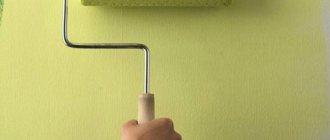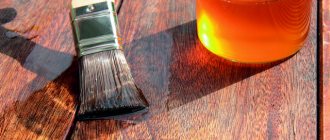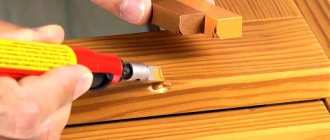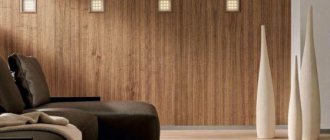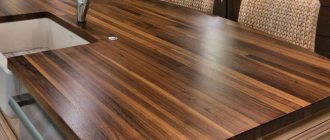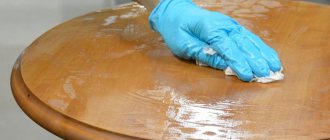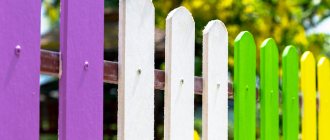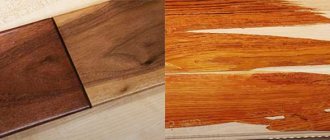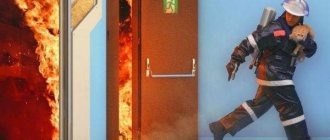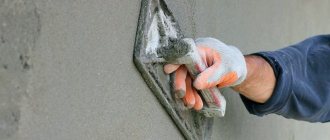The fashion for lining has entered its second phase, and this is absolutely justified. Since practicality and ease of maintenance, as well as an affordable price, are beneficial in choosing this material for finishing your premises. For a long time, this material was unjustifiably considered a budget-friendly and tasteless finishing method. In fact, this type of cladding has extremely wide decorative potential. The lining and its unique texture truly makes this type of decorating your home unique.
About rocks and textures
Only wood products have texture, or as they also say, pattern, unless the pattern was applied mechanically or by other means. After all, each breed has its own pattern and color, so creating an individual and unique interior is limited only by your imagination.
Due to the fact that the range of breeds and methods is truly large, you can play with colors, patterns, textures and, of course, directions. After all, everyone knows that lining is mainly laid out in only three ways:
- Vertical;
- Horizontal;
- Diagonal.
Since any wood texture is in perfect harmony with almost any exterior and interior, well, perhaps only excluding high-tech, this environmental material will be in demand everywhere and always. To select the correct pattern and installation method, you should consider some subtleties:
- In a room with low ceilings, you should not install the profile horizontally, as this will visually make the room even lower. An excellent alternative would be vertical and herringbone;
- A room with high ceilings but a small area cannot be decorated with vertical laying - this will create an effect where a person will feel like a pencil in a glass;
- While the “classic herringbone” must be installed with certain skills and an additional set of tools, for example, a protractor, to obtain an angle of 45°;
- “Lapped herringbone” needs perfectly flat surfaces to avoid the visual effect of curvature;
- Having decided on squares, it is also worth carefully measuring the surface quadrature - with curved parameters the defect will be much more noticeable;
Among the species, there is a clear difference between deciduous and coniferous varieties. Both coniferous and deciduous species have their own species. For example, conifers include:
- Pine is the cheapest and most accessible material;
- Spruce - in most of its qualities, is an analogue of pine, but is much more susceptible to rotting;
- Larch is the second most durable coniferous tree. It tolerates moisture well, is not afraid of temperature changes, and is also not susceptible to rotting;
- Cedar is the absolute champion among coniferous linings. Such wood is weakly inferior in strength to iron material. But at the same time it is beautifully processed;
Hardwood species are represented by the following types:
- Linden - has sufficient strength. It has a beautiful color, which will darken after use;
- Alder - alder profile contains tannins, which, after heating, are released and have a beneficial effect on human health;
- Oak is an aristocrat among deciduous trees. This type of wood has high strength, which, in turn, leads to a significant increase in the cost of its processing;
There are, among other things, exotic types of wood from which the panels are made. Ash, beech, and aspen are much less common on the market. Mahogany is generally considered a serious exotic, but even this species, with due diligence, will not be difficult to find.
Hardwood lining is inferior in service life to coniferous types of wood; over time, color is lost, its other indicators deteriorate, and additional protection from parasitic insects and moisture is required.
Wood textures:
Alternating stripes:
This pattern is typical for rosewood, walnut and mahogany. Formed when a block of wood is cut in a radial plane. Rosewood and walnut are used to make furniture as well as decorative panels. Most often, an array of this wood is used to furnish an office or bedroom.
Waves or moiré:
A unique ornament that captivates and creates a feeling of three-dimensional space. A tabletop with such a pattern is extremely impressive and fits perfectly into an interior with laconic furniture in the spirit of minimalism.
Characteristic of maple, birch and mahogany.
V-pattern:
This pattern is obtained by cutting a tree tangentially, but only if the trunk is wide enough and has bright growth rings. The pattern will decorate any furniture or be suitable for creating any decorative item, such as a decorative vase.
Sink surface:
This is a pattern that can be obtained on a cut at the branching points. Chaotically arranged lines on dark shells are characteristic of ash and Caucasian walnut, as well as birch, poplar and maple. This pattern looks great both on the surface of furniture and on decorative items, such as panels, wall panels or mosaics.
Material grades
The grade of the material means the presence of defects on the finished profile. Without taking into account grade “C”, the presence of defects does not affect the quality of the panels, but, from an aesthetic point of view, it makes a serious difference:
- Premium or Extra grade. This class includes panels that do not have any flaws;
- Class “A” wood may contain no more than 2 captive knots, two non-through cracks, and a resin pocket not exceeding 1 cm;
- Grade “B” - 4 captive knots, non-through cracks and small chips are allowed per 150 cm. No more than two resin pockets are allowed. The price of this variety surprises with its affordability, and in appearance it is not much inferior to grade “A”;
“C” class lining is of low quality. The presence of falling knots, through cracks, chips, as well as the core, make the use of such material impossible for standard rooms - it is more suitable for finishing utility rooms. When installing panels of this class, it is necessary to adjust and paint the surface.
If the lining is expensive, then it will have a seamless texture.
When installing, it is worth taking into account the individual characteristics of the material, as well as the scope of application. The main qualities of the profile are:
- Strength. This criterion depends on the thickness and rock;
- Hardness. This indicator indicates the complexity of processing the material;
- Humidity. This indicator is important when choosing a location for installation;
- Variety This indicator determines the ideal size and appearance of the product;
- Wear resistance. This criterion is important if you install the profile in a room with many corners and rounded surfaces;
- Fire resistance. The most important indicator when used for steam rooms, baths and saunas;
- Aesthetic and medicinal qualities.
Exceptions
There is a separate color perception that relates simultaneously to color, more precisely to shade and texture - these are matte and glossy shades, or textures. We say: it has a matte tint or has a glossy tint because it is the texture of the surface that gives the shade its properties. A painted surface with a slight roughness will give a matte tint, smoothed out glossy. For example, wood varnish - matte varnish creates a barely noticeable rough coating, while glossy varnishes smooth the surface, forming a glossy tint. The expression “shade” is more often used - matte shade, glossy shade, than texture.
Peculiarities
Temperature perception of textures - can be cold or warm. Glass, metals - cold textures. Wood is a warm texture. A stone can be classified as either warm or cold depending on its color. Temperature perceptions of textures can be enhanced or weakened by color.
The description of textures can be general technical, specific technical, characterizing or creative: wood - beech wood; leather - crocodile skin; paper - old newspaper. There are no clear rules for textural description. Names are assigned to understand the type of texture and possible associations that will develop ideas for application and combination in interior design.
Wallpaper with the texture of aged boards. Online store: www.oboivdom.by
Errors in wording
When they say the texture of wood - meaning the appearance is similar to wood - this is a mistake. When using the phrase “wood texture” as a tactile sensation, this is true.
Let's fix it
Let's conduct a mini experiment and turn the texture into texture. Let's take a regular sheet of A4 size office paper. Let's describe the invoice:
Visually - not pronounced, having a matte tint;
Tactilely - slightly rough, velvety.
Let's describe the texture:
Visually - not expressed;
Tactile - paper.
We print an image of a brick on paper, carefully cut it and glue it to the wall. What will happen? Let's describe the texture:
Visually - not pronounced, having a matte tint;
Tactilely - slightly rough, velvety.
Let's describe the texture:
Visually - brick;
Tactile - paper.
Note that the success of the experiment will be greatly influenced by the quality and realism of the image.
Conclusion
The difference between texture and texture in interior design is needed to understand the effects produced by design elements.
Texture and structure add properties to the interior that photography does not convey. They can both enrich the interior and complicate it.
When shopping online, tactile sensations cannot be conveyed; we can only evaluate them visually. But tactile sensations sometimes produce a greater effect than visual ones.
Continuation of the theme of texture and structure
The articles combination of textures and combination of textures tell how to apply different textures and textures in interior design:
Combination of textures: contrast and harmony of texture
Combination of materials and textures in interior design
Subscribe to notifications of new publications by email or on social networks:
| Add to our groups on social networks: |
Textured materials
It is important to understand that each material has a texture. However, in some cases it turns out to be strongly expressed, while in others it is neutral. The first group includes leather, treated or untreated stone, glass, decorative plaster, various stucco options, liquid and textured wallpaper.
This also includes metal, which can be forged - decorative furniture, loft-style sconces, etc., and chrome-plated with a shiny surface. The texture of wood, brick, ceramic tiles, ordinary plaster, paint coating, etc. can be considered relatively neutral.
There are many options for the textures themselves, but the main ones used in the interior include the following:
- glossy and matte;
- smooth, rough and silky;
- with irregularities or patterns;
- with 3D effect.
All these characteristics must be taken into account by the owner when choosing finishing materials for various rooms. For example, in the kitchen it is better to use smooth textures, which will reduce the risk of severe contamination and require less time for cleaning. You can use embossed options in the bedroom and living room - they will add coziness.
Recommendations for combining textures and textures
When choosing combinations of materials, you should use the following principles:
- Focus on contrast - combine gloss and matte surfaces, plain and textured materials.
- Try to avoid combining natural materials with artificial ones, or select high-quality imitations.
- Do not oversaturate the interior with different textures – one or two distinct ones are enough.
- Do not use different materials with the same textures - natural stone and wallpaper matching its pattern.
It is also worth focusing on the price and exclusivity of materials. It is not recommended to place expensive elements, for example, designer chests of drawers made of natural wood, into a budget interior and vice versa.
Relief and smooth surfaces
The combination of embossed and smooth surfaces is used by designers to ensure that plain interior items do not merge. This solution is well suited for decorating walls; for example, smooth white surfaces can be diversified with 3D panels. But it is not necessary to use texture only with plain walls - colored ones, in turn, will add contrast and make the room more elegant.
Photo: moonwallstickers.com
Materials with a pronounced texture
Considering all the materials that are used in the design of an apartment or house, we can highlight the following options that have a noticeable texture:
- Natural wood of various species. It may have a natural wood pattern. It is also often emphasized through the use of special impregnations, varnishes, etc.
- Stone - granite, marble, etc. Stone slabs can be used in both processed and natural forms. In this case, they will additionally differ in texture.
- Bamboo, straw, rattan. Such materials show their texture in finished products, creating various patterns.
- Tiles, wallpaper and other materials made to look natural. These are artificially made coatings that imitate wood, brick, stone, etc.
- Textile. In this case, we are talking about both natural fibers - textured due to the pattern, and options with various patterns.
- Fur and pile - natural or artificial.
- Various artificial materials with decorative designs.
Also, do not forget about plants, which are often used in interiors in loft, classic, and minimalist styles. If a large number of them are concentrated in any area of the room, this element can also be considered a separate texture.
Wood and natural stone
The combination of wood and stone is quite popular in turnkey design projects. And this is not surprising, since these two materials look great together. They are both natural and natural, which is also important. When combining these materials, it is important to take into account one feature: if the wood has a textured surface, then it is better to make the stone smooth, and vice versa.
Photo: thespruce.com
Tree and living plants
In modern interiors, a combination of wood and living plants is often used. This combination gives the interior life, adds bright colors and freshness. Plants are often sold in the form of a phytowall, and wood serves as a facing material for it.
Photo: possibledecor.com
